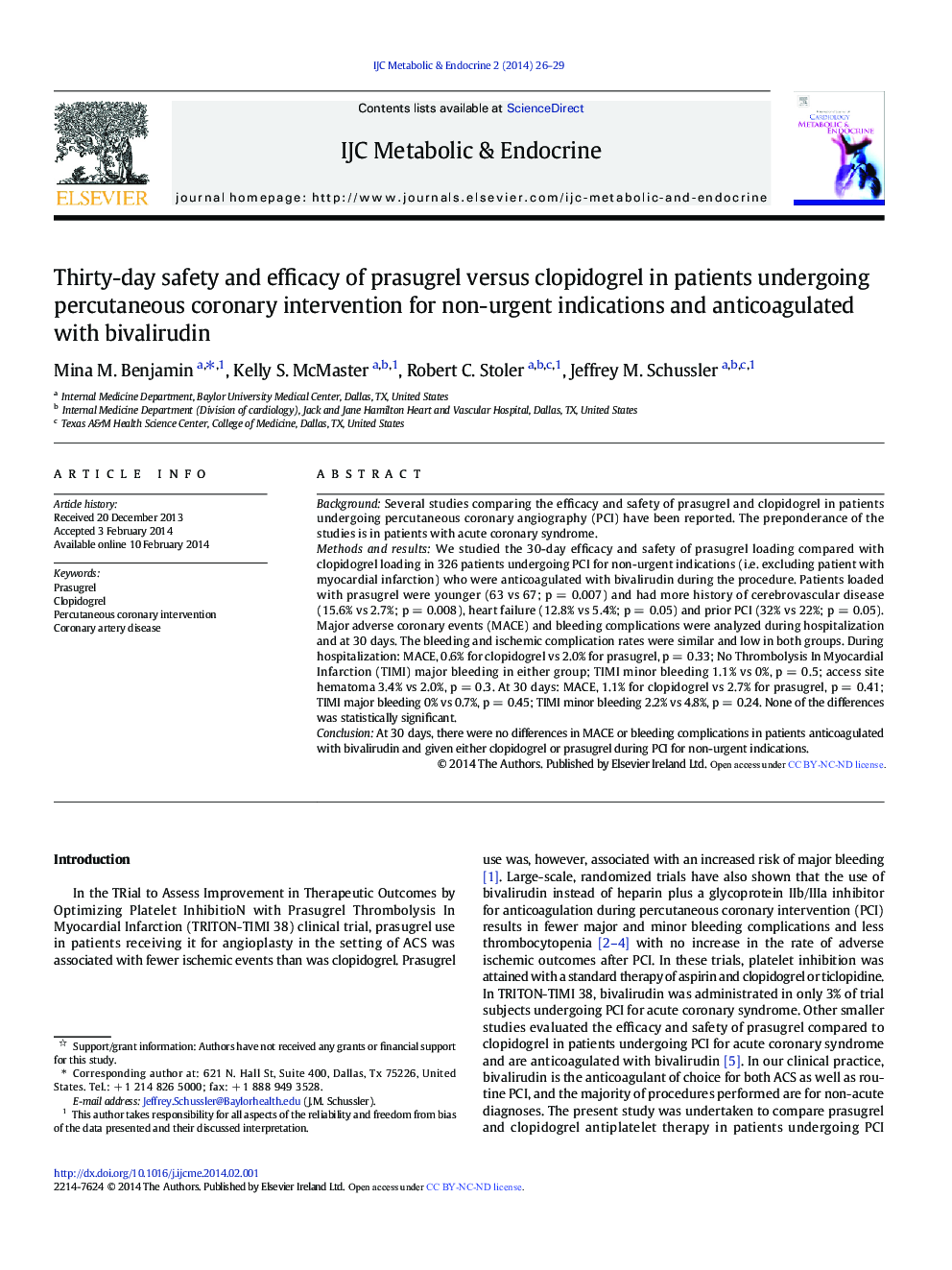| Article ID | Journal | Published Year | Pages | File Type |
|---|---|---|---|---|
| 2927299 | IJC Metabolic & Endocrine | 2014 | 4 Pages |
BackgroundSeveral studies comparing the efficacy and safety of prasugrel and clopidogrel in patients undergoing percutaneous coronary angiography (PCI) have been reported. The preponderance of the studies is in patients with acute coronary syndrome.Methods and resultsWe studied the 30-day efficacy and safety of prasugrel loading compared with clopidogrel loading in 326 patients undergoing PCI for non-urgent indications (i.e. excluding patient with myocardial infarction) who were anticoagulated with bivalirudin during the procedure. Patients loaded with prasugrel were younger (63 vs 67; p = 0.007) and had more history of cerebrovascular disease (15.6% vs 2.7%; p = 0.008), heart failure (12.8% vs 5.4%; p = 0.05) and prior PCI (32% vs 22%; p = 0.05). Major adverse coronary events (MACE) and bleeding complications were analyzed during hospitalization and at 30 days. The bleeding and ischemic complication rates were similar and low in both groups. During hospitalization: MACE, 0.6% for clopidogrel vs 2.0% for prasugrel, p = 0.33; No Thrombolysis In Myocardial Infarction (TIMI) major bleeding in either group; TIMI minor bleeding 1.1% vs 0%, p = 0.5; access site hematoma 3.4% vs 2.0%, p = 0.3. At 30 days: MACE, 1.1% for clopidogrel vs 2.7% for prasugrel, p = 0.41; TIMI major bleeding 0% vs 0.7%, p = 0.45; TIMI minor bleeding 2.2% vs 4.8%, p = 0.24. None of the differences was statistically significant.ConclusionAt 30 days, there were no differences in MACE or bleeding complications in patients anticoagulated with bivalirudin and given either clopidogrel or prasugrel during PCI for non-urgent indications.
